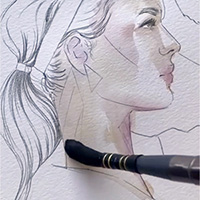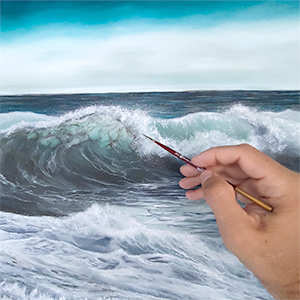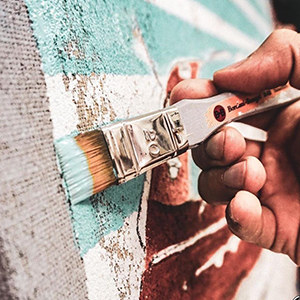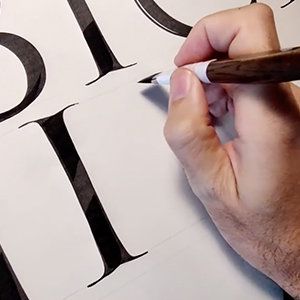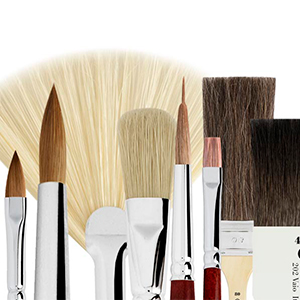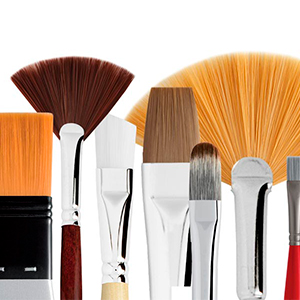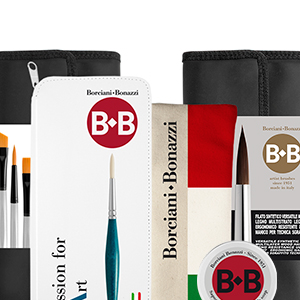Which brushes can be used to paint with the acrylic?
Used by students, amateurs and professionals, acrylic painting is the last born in the pictorial techniques, but perhaps today the best known for its versatility.
The pigment, mixed with the acrylic resin, creates a colour that dries quickly, adheres to all surfaces and becomes permanent and irreversible on absorbent ones.
The mixture with different types of resin gives birth to many types of color, finish and density. The only common element is that once dried it can no longer be removed with water from absorbent surfaces, but only with very aggressive solvents.
On non-porous materials, on the other hand, it creates a film that comes off with hot water. From bristle to Kolinsky sable, all natural fibre can be used, paying close attention to cleaning because acrylic resin tends to stick to porous fibre.
Beginners can be oriented to synthetic brushes which, with low costs, have greater resistance to the chemical characteristics of the acrylic resin contained in the colours. Here, too, the choice is varied and above all linked to the final effect you want to achieve. The multiplicity of colour characteristics creates likewise many variations of use, and the most suitable brushes will be used based on the chosen technique.
For those who love to paint with thick and pasty colours, the ideal is a resistant and tenacious synthetic fibre, which leaves traces of "movement" in the pictorial techniques.
For those who want a result with full and covering colours, the best choice is a soft and light fibre that leaves no traces. Careful cleaning of the colour, especially near the ferrule, must be carried out by immersing the brush in warm water after use and then applying vegetable soap.
This is necessary to avoid the rapid drying of the acrylic components to stick to the brush fibres, drying it irreversibly and making it unusable.

















